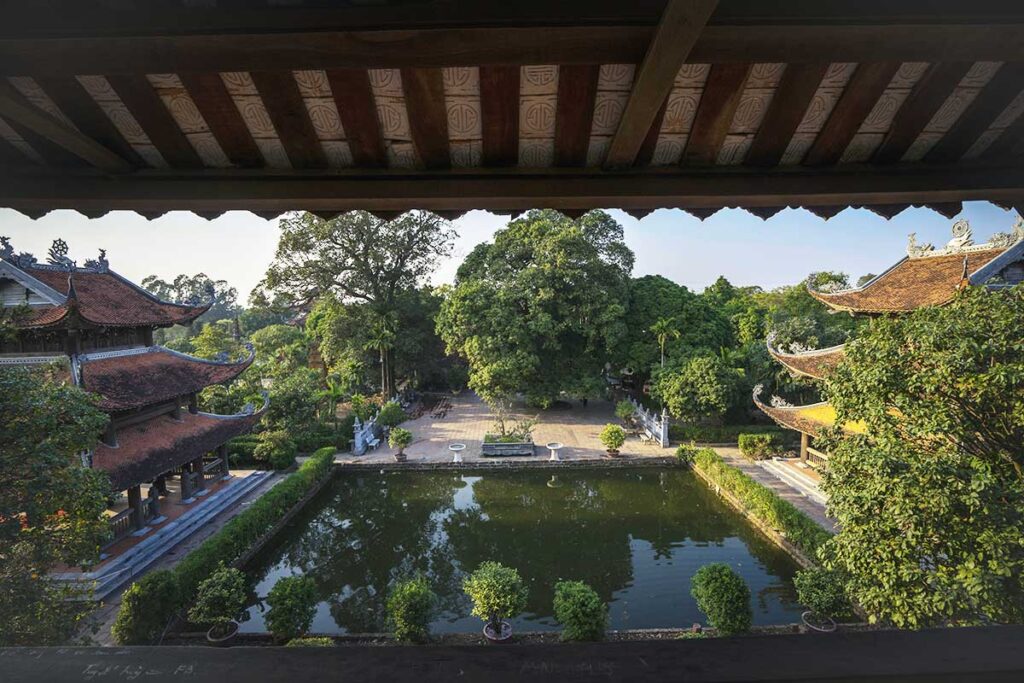What is Nom Village like?
Nom Village is a quiet, well-preserved rural village that reflects the traditional layout and atmosphere of northern Vietnam. As you enter through the old village gate, you’ll find a peaceful scene of banyan trees, lotus ponds, tiled-roof houses, and narrow paths lined with old brick walls. In the center of the village sits a large pond with a communal house and ancient banyan tree at one end—an iconic setup found in many old Vietnamese villages.
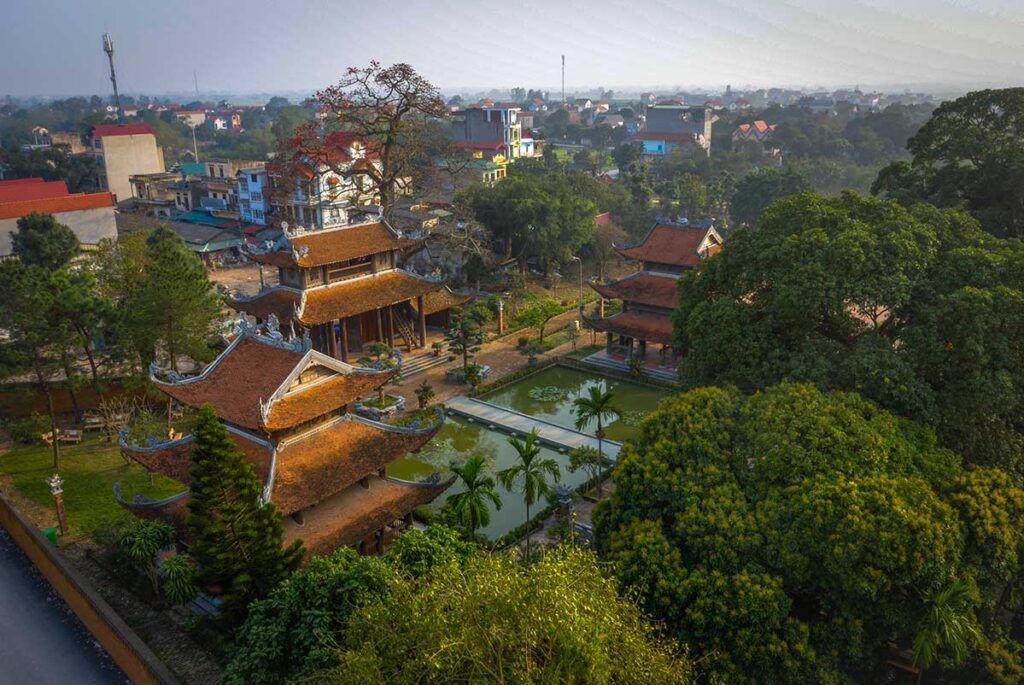
The surroundings include rice fields, vegetable gardens, and a stone bridge that connects the heart of the village with the pagoda and market. Nom is not just photogenic—it’s also unusually intact, with many of its 200-year-old houses, ancestral halls, and clan temples still standing.
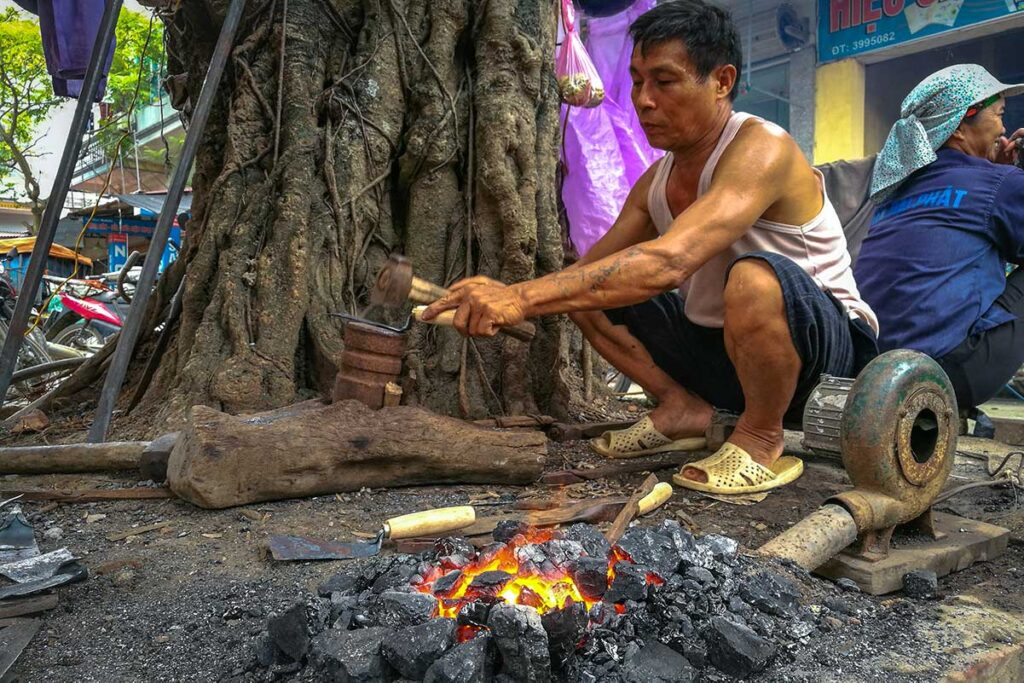
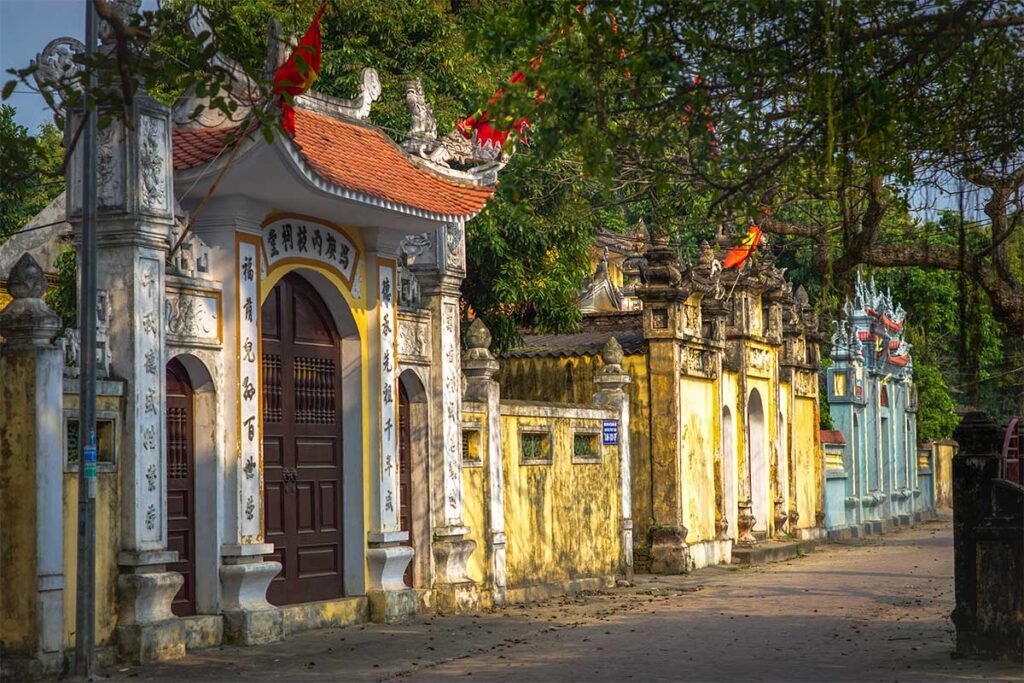
Despite its age, the village is exceptionally clean and well-kept, thanks to a strong sense of pride among local residents. There’s no tourist infrastructure here—no official signage, guides, or ticket booths—which keeps the experience authentic, but also means you’ll need to explore independently or with some background knowledge. It’s a place that feels frozen in time, but you should come with realistic expectations: this is a living village, not an open-air museum.
Highlights of visiting Nom Village and Nom Pagoda
1. Nom Pagoda (Linh Thông Co Tu)
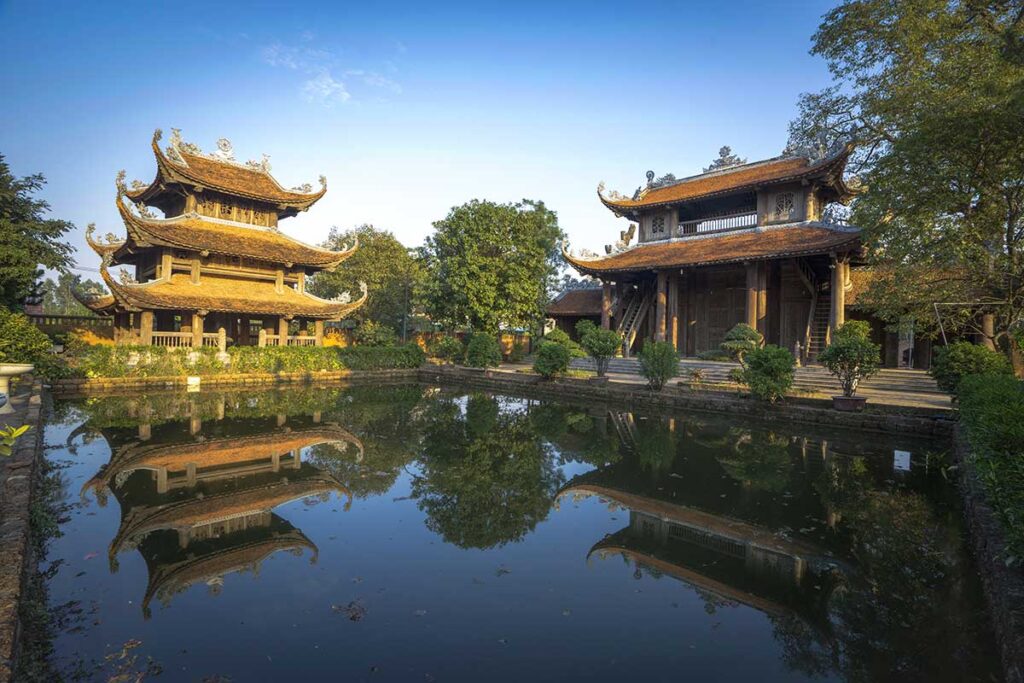
Nom Pagoda is one of the most notable landmarks in the village. Originally built during the Later Le Dynasty, it has been renovated multiple times but still retains a peaceful courtyard and traditional architecture. The main highlight is its collection of over 100 terracotta Arhat statues, each with unique postures and expressions. Despite several severe floods in 1945, 1971, and 1986, many of the statues have remained remarkably well preserved.
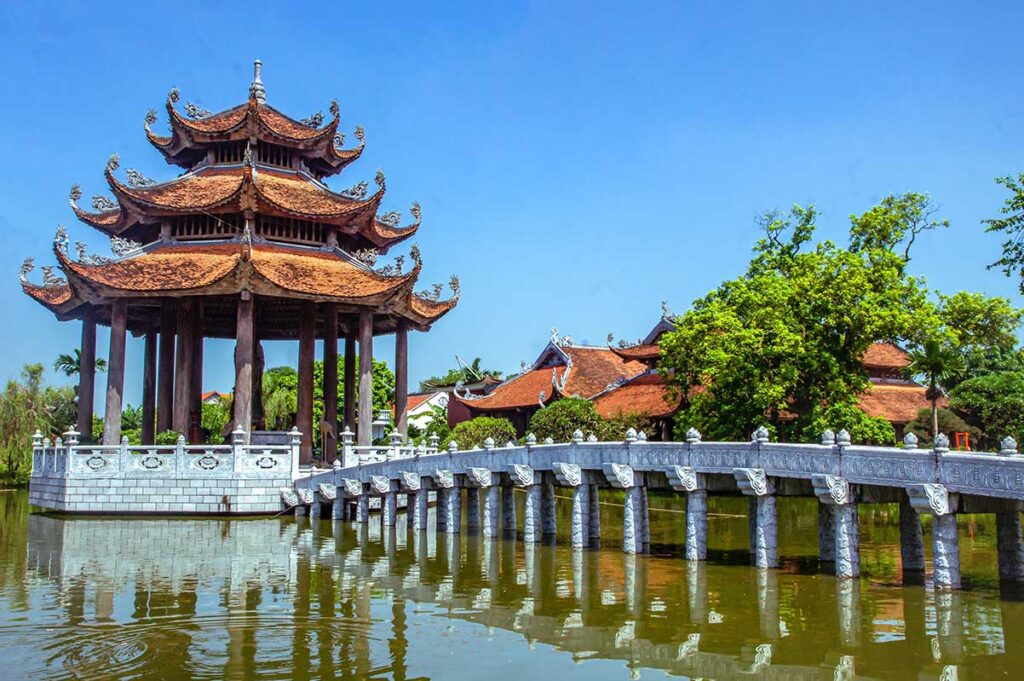
The pagoda itself is quiet, with few visitors, and offers a calm place to walk around or sit in the shade. It’s worth noting, however, that not all of the current structures are original—some parts have been rebuilt or modernized over time.
2. Nom Stone Bridge
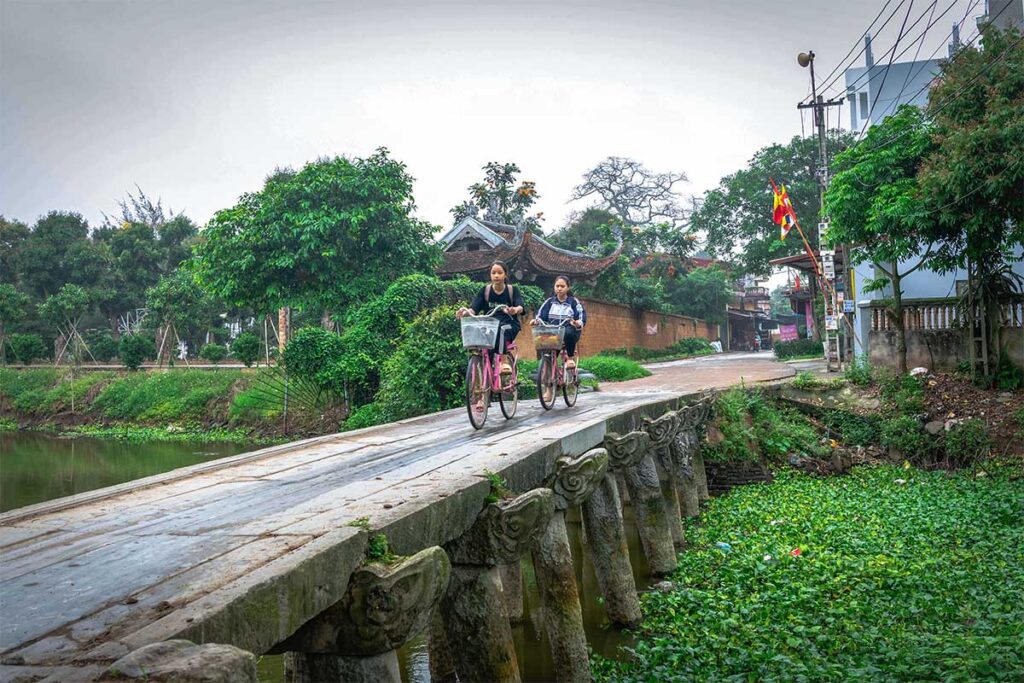
Connecting the village to the pagoda and market is a beautiful 9-span stone bridge built in 1860 over the Nguyet Duc River. Each pier is carved with dragon motifs, and the surface is made of long, flat stone slabs. The design is rare, especially for something that has survived more than 150 years with so little alteration.
It’s one of the most visually distinctive features in the area and makes for a nice photo stop, especially in the early morning or late afternoon light.
3. Nom Village Gate
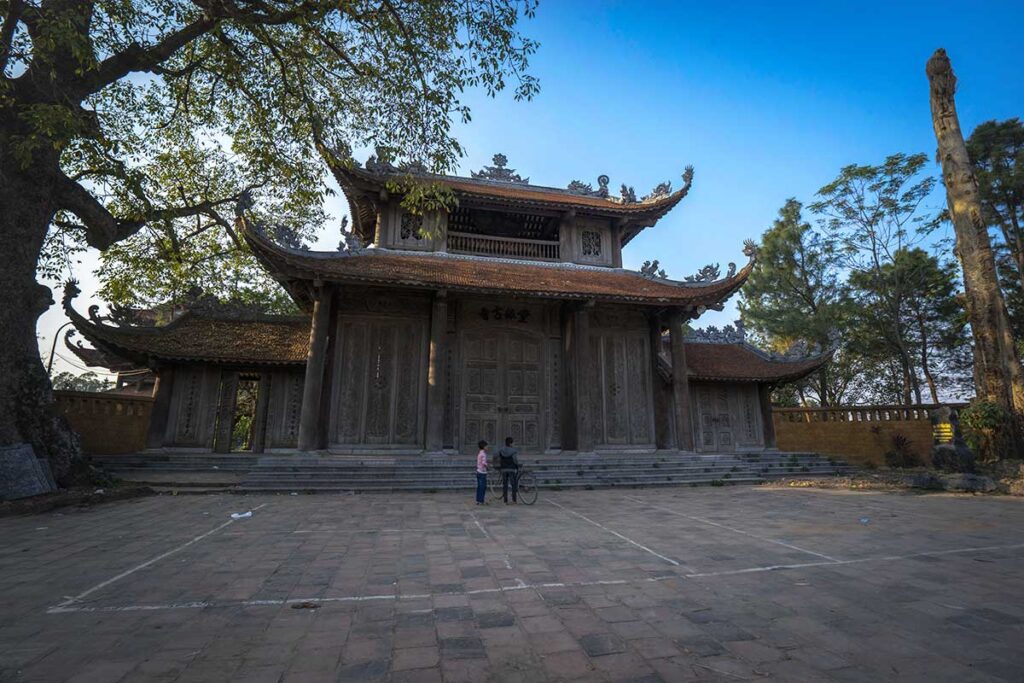
The octagonal village gate, built in 1855, is the symbolic entrance to Nom and still features intricate wooden carvings. Its design is said to be reserved for villages with royal connections—Nom once produced bronze coins for the Nguyen Dynasty, which granted it a higher cultural status.
It’s not a large structure, but it’s a meaningful one, especially for those interested in village planning and Vietnamese symbolism. Most visitors walk through it without realizing the history behind it.
4. Village Pond, Communal House & Banyan Tree
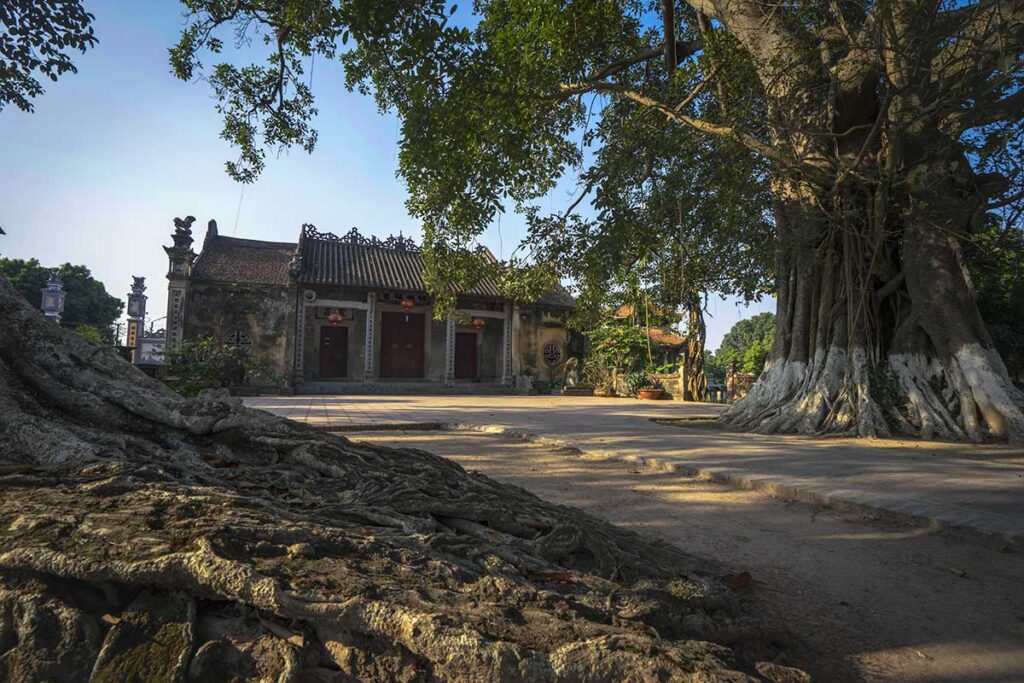
At the center of Nom Village is a classic rural layout: a large pond, an old banyan tree, and the communal house behind it. The house is dedicated to Saint Tam Giang, a general who served under the Trung Sisters during Vietnam’s early resistance against Chinese rule.
The area around the pond is a peaceful gathering place where locals still sit on stone benches playing chess or chatting. It’s a great spot to soak in the quiet rhythm of rural life and appreciate how little has changed here over the decades.
5. Ancient Houses and Clan Temples
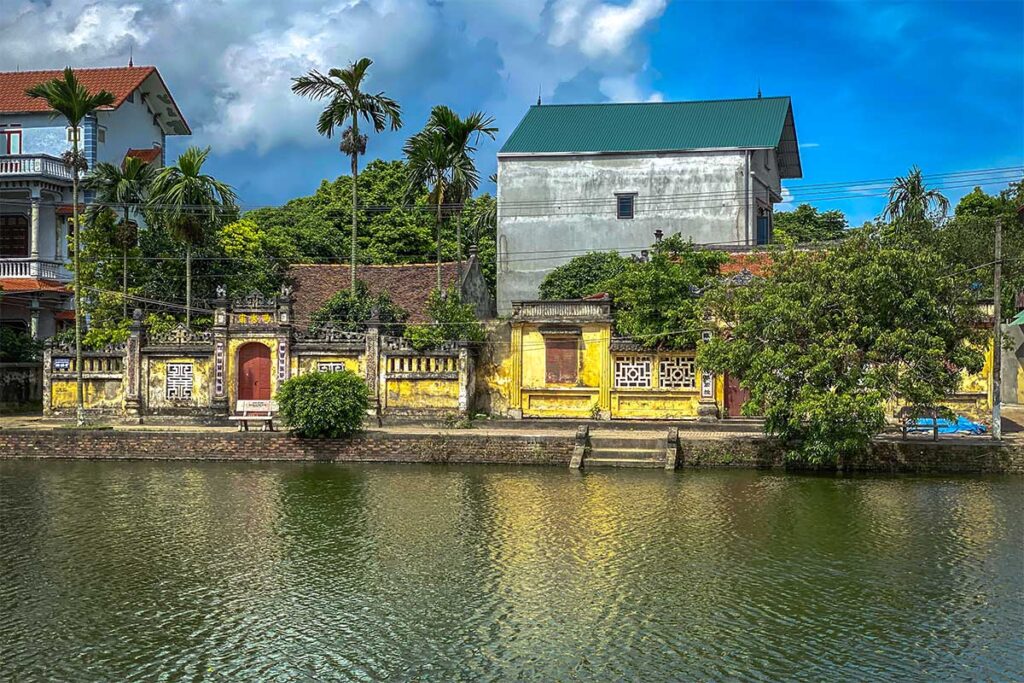
Nom Village still retains over 10 ancient houses, many of them 200 years old or more. One of the most famous is the home of Phung Van Long, which has been carefully preserved by the family despite receiving offers in the billions of VND. The architecture features low-tiled roofs, five-compartment layouts, and beautifully carved wooden columns and beams.
In addition, there are 7 to 9 clan temples representing old family lineages like the Nguyen, Le, Phung, and Ta clans. These ancestral halls are not tourist attractions—they’re maintained by the families themselves, but they add to the village’s authentic atmosphere.
6. Nom Market
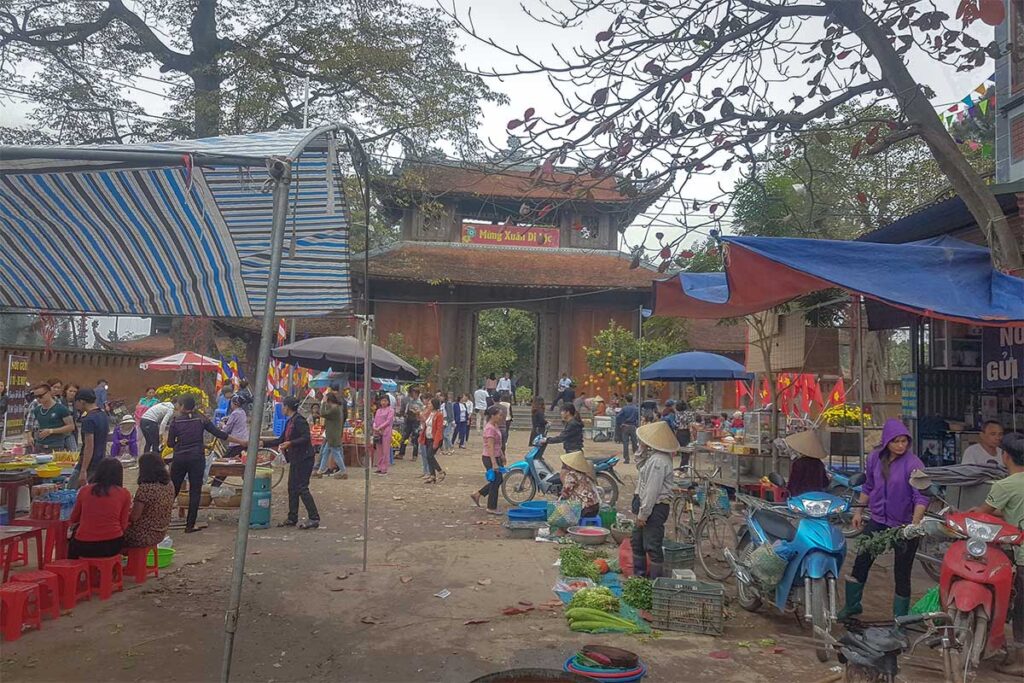
Just in front of the pagoda sits Nom Market, a small, local market housed in rows of simple stalls. It doesn’t feel staged or made for tourists—this is where locals actually come for daily shopping. The layout and architecture add to the old-world charm of the area.
If you stop by in the morning, you might catch some activity. It’s also a good place to grab a fresh coconut, iced tea, or quick snack while exploring the village.
Location and How to Get There
Where is Nom Village?
Nom Village is located in Dai Dong commune, Van Lam district, in Hung Yen Province. It lies about 30 to 35 kilometers southeast of Hanoi, depending on your starting point. By car, the trip usually takes 50 to 60 minutes, though this can vary with traffic.
Getting there from Hanoi
Private Car with Driver
This is the most convenient and flexible option, especially for foreign travelers. A car with driver allows you to explore at your own pace, without worrying about routes or parking. Unlike a taxi, you agree on a fixed price in advance, which helps avoid surprises and allows for planned detours. It’s also ideal if you want to combine Nom Village with other nearby places like But Thap Pagoda, Dau Pagoda, or Dong Ho Painting Village as part of a custom day trip.
Motorbike
If you’re comfortable riding in Vietnam, motorbiking to Nom Village is doable. The roads are mostly provincial highways with light traffic, though not particularly scenic. Make sure to use a navigation app, as there’s little English signage and some turns can be easy to miss. This option is best for experienced riders who enjoy exploring independently.
Nearby sights to combine with your visit
If you’re planning a trip to Nom Village, it makes sense to turn it into a half-day or full-day cultural itinerary. Several other interesting sites are located within a 10–15 minute drive, each offering a different glimpse into northern Vietnam’s spiritual or artistic heritage.
Dâu Pagoda
Located about 10 to 15 minutes from Nom, Dâu Pagoda is considered one of the oldest Buddhist temples in Vietnam, with roots dating back nearly 2,000 years. It’s an active religious site and a key destination for those interested in early Vietnamese Buddhism.
➤ Read our full guide to Dau Pagoda
But Tháp Pagoda
Just a 10-minute drive from Nom Village, But Tháp is one of the most architecturally impressive pagodas in the Red River Delta. It’s known for its serene layout, historical significance, and the famous thousand-handed Guanyin statue.
➤ Read our full guide to But Thap Pagoda
Dong Ho Painting Village
Around 10 to 15 minutes from Nom, Dong Ho is a traditional craft village famous for its woodblock folk paintings made with natural dyes and dó paper. A visit here offers a hands-on look at Vietnamese visual culture and makes a nice contrast to the temples and pagodas nearby.
➤ Read our full guide to Dong Ho Painting Village
Is Nom Village worth visiting?
On its own, Nom Village doesn’t justify the trip—especially if you haven’t yet explored Hanoi’s better-known temples, pagodas, and historic sites. The atmosphere is peaceful and the village is well-preserved, but nothing here is more impressive than what you can already see in the capital.
That said, Nom is a worthwhile stop if you’re already planning to explore the Bac Ninh–Hung Yen area and want to build a day around quieter, lesser-known cultural sights. The village offers a genuine look at rural life, with ancient houses, clan temples, and a slower pace that hasn’t been heavily commercialized.
It’s best suited for travelers who enjoy non-touristy destinations, appreciate old architecture, and don’t mind a low-key experience. Just don’t expect major highlights—it’s the combination of Nom Village, Nom Pagoda, and nearby sites like But Thap and Dong Ho that makes the trip worth it.
